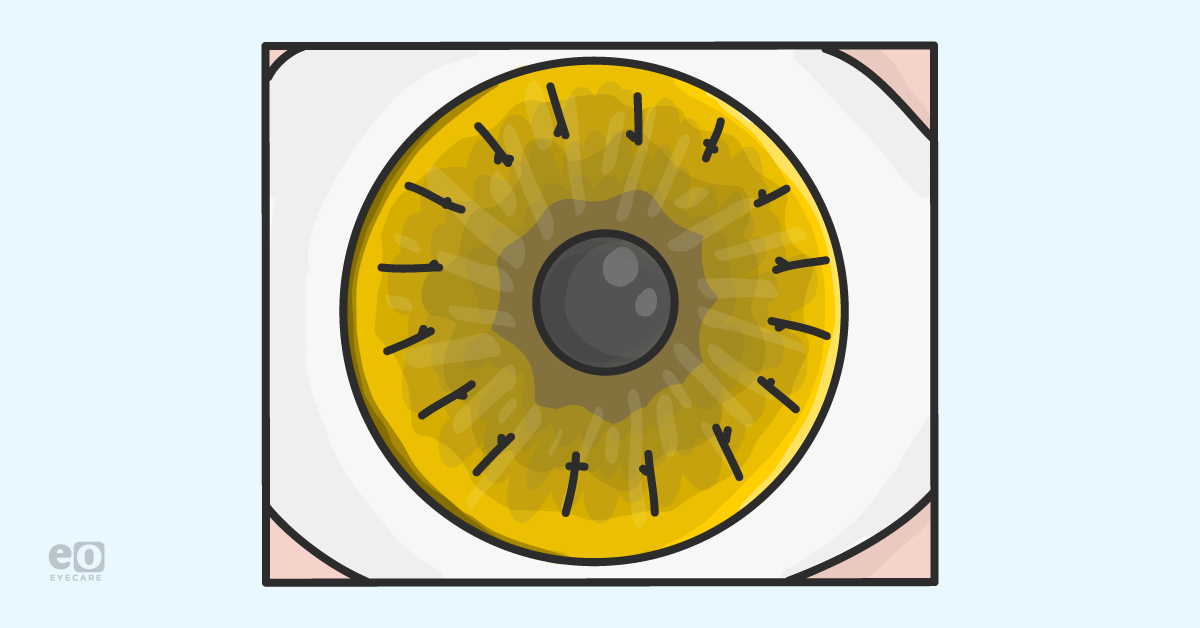Despite the unprecedented challenges the COVID-19 pandemic brought to the healthcare system in 2020, the Eye Bank Association of America reports 66,278
corneal transplants in the year, only a 22.5% decrease from the 85,601 procedures completed in 2019.
1 With over a 97% success rate in restoring vision, corneal transplant surgery or keratoplasty remains a mainstay in the field of ophthalmology, with constant innovation and improvements made in equipment, procedure and consequently, patient outcomes.
The optometrist’s multi-faceted role in co-management includes timely triage and referrals, preparing patients for surgery, handling post-operative care, and educating patients throughout the process. Optometrists must be well versed in the variety of corneal transplant surgeries, as well as be able to identify, treat and refer post-surgical complications and actively engage in long-term management of the mutual patient.
Corneal transplant surgery (keratoplasty) can be divided into full thickness keratoplasty or partial thickness keratoplasty. As the names suggest, these types refer to the traditional penetrating keratoplasty (PKP) versus layered approaches such as deep anterior lamellar keratoplasty (DALK), Descemet’s stripping endothelial keratoplasty (DSEK/DSAEK), Descemet’s membrane endothelial keratoplasty (DMEK) and pre-Descemet’s endothelial keratoplasty (PDEK). Partial thickness keratoplasty procedures carry less risk of transplant failure, a shorter recovery time, and have been a promising option for many patients.2
Penetrating Keratoplasty (PKP)
Penetrating keratoplasty (PKP) is a full thickness corneal transplant in which a portion of the damaged cornea (7 to 9 mm) is removed with a trephine or femtosecond laser and replaced with a healthy donor corneal button of the same size. The donor button is attached with four cardinal sutures, followed by additional sutures and modifications as determined by the surgeon with the ultimate goal being to maximize optical clarity and decrease astigmatism and other irregularities.
Due to the avascular and thus immune-privileged nature of the cornea, this procedure enjoys a success rate of 86% in the first year as operative complications in this area are minimal, relatively.
3 Some indications for PKP include bullous keratopathy,
keratoconus, and advanced corneal pathologies.
Advantages of PKP are enhanced optical clarity, procedural simplicity, and the removal and replacement of an entire, damaged cornea. Due to the nature of the procedure, however, the surgeon and optometrist must be aware of suture complications, ocular surface disease, signs of graft dehiscence, failure and rejection, intraocular complications such as endophthalmitis, retinal detachment,
glaucoma, cataracts, infectious keratitis, and corneal rupture.
4Post-operative care for PKP patients is a long-term affair. Treatment begins initially with topical antibiotics for 1-2 weeks followed by topical steroids tapered over months. Care must be taken to ensure minimal risk of inflammatory events and graft rejection, and management of co-existing ocular conditions as well as careful, life-long monitoring. Sutures are removed or kept in according to the surgeon’s discretion, and stabilization of the cornea can extend from 18-24 months or more.
Lamellar Keratoplasty
Deep anterior lamellar keratoplasty (
DALK) varies from other lamellar surgeries as it aims to replace the anterior layers, leaving the Descemet’s membrane and endothelium intact. It is advantageous over PKP due to reduced long-term risk of graft rejection and subsequently less dependence on steroids. Reduced steroid usage can significantly reduce the risk of advanced glaucoma, infectious keratitis, herpetic events, and cataracts. On the other hand, this procedure is time-consuming, technically complicated, and carries a risk of endothelial layer perforation.
5Posterior lamellar keratoplasties such as Descemet’s stripping endothelial keratoplasty (DSEK/DSAEK) and Descemet’s membrane endothelial keratoplasty (DMEK) are indicated in endothelial pathologies such as pseudophakic bullous keratopathy and Fuch’s endothelial dystrophy. With DSEK/DSAEK, the graft includes Descemet’s membrane, endothelium, and some posterior stroma for insulation and manipulation during the transplant. The procedure involves an incision through which the graft is inserted, followed by an air or gas bubble to allow the graft to develop in place.
The benefits include lack of sutures, relatively faster visual recovery, reduced intraocular complications and lower risk of rejection. However, it comes with the drawback of limited post-operative best corrected visual acuity (BCVA).6 DMEK improves postoperative BCVA as the grafts are solely Descemet’s membrane and endothelium, but carries a risk of failure due to the nature of the fragile donor tissue.7
In lamellar keratoplasties, similar to PKP, topical steroid therapy is essential to prevent rejection and maintain the clarity of the donor graft. Steroids are dosed QID early in the post-operative treatment and tapered over the year. Graft adhesion problems and pupillary block can present early, and thus patients are encouraged to maintain supine positions as much as possible. The air bubble inserted should diffuse into the anterior chamber within a week, but referral is needed to manipulate, re-float the graft or do a graft exchange if the need arises.8
The role of the optometrist
Like any surgical procedure, a corneal transplant can be physically and emotionally rigorous for a patient. Proper education and appropriate management in a timely manner are conducive to improved patient outcomes. As in any case, a thorough and detailed ocular and family history with appropriate documentation is of utmost importance.
Establishing care is ideal, not only to build rapport but for the opportunity to obtain an accurate ocular picture pre-procedure and thoroughly educate the patient. Post-surgery, optometrists would be able to
co-manage with the ophthalmologist to monitor the patient in timely intervals, screen for any potential complications, reassure and re-educate the patient, monitor compliance to post-surgical drops, and refer efficiently in the event of major complications.
